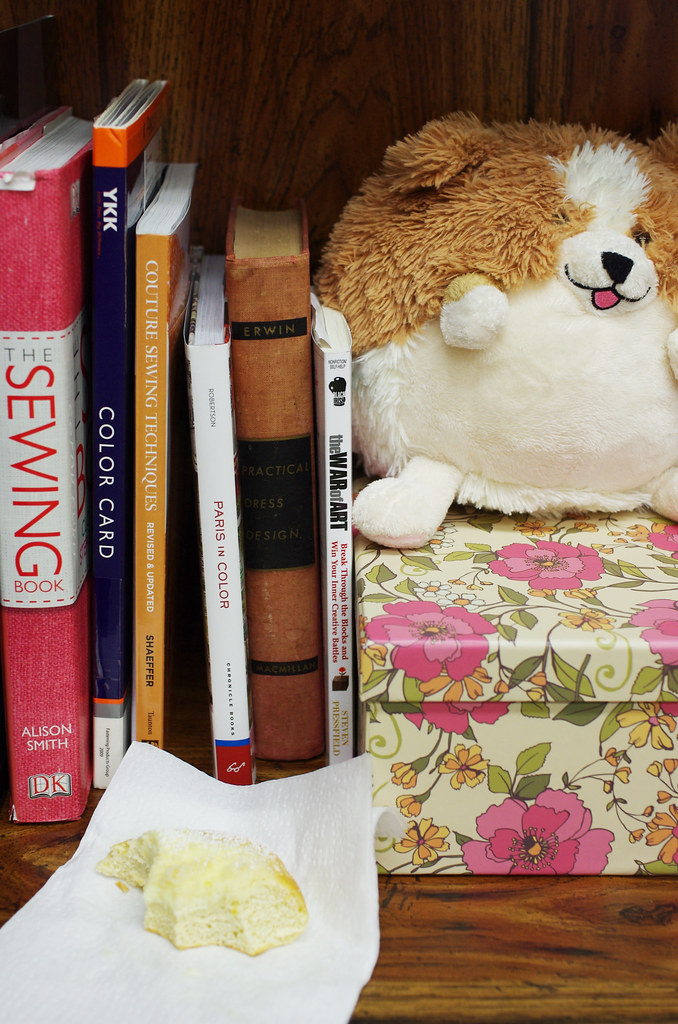
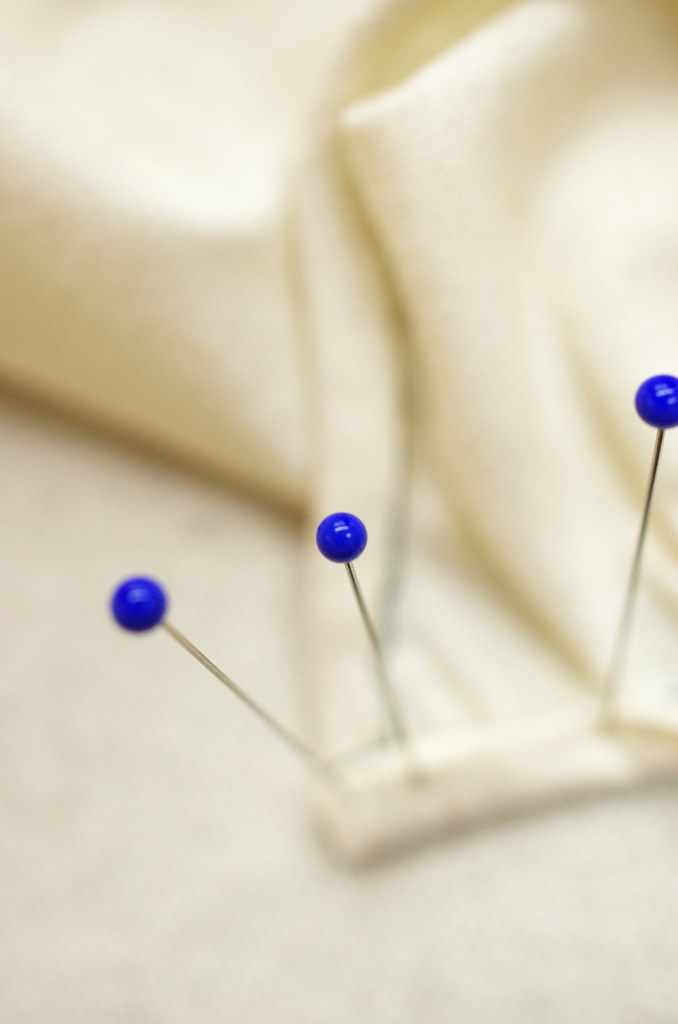
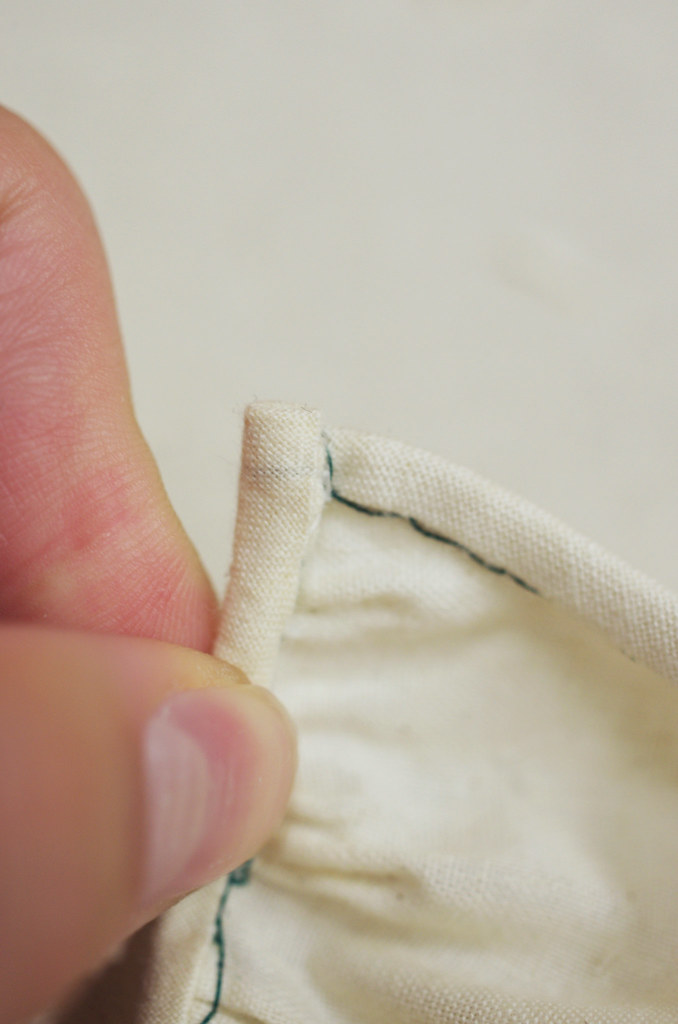
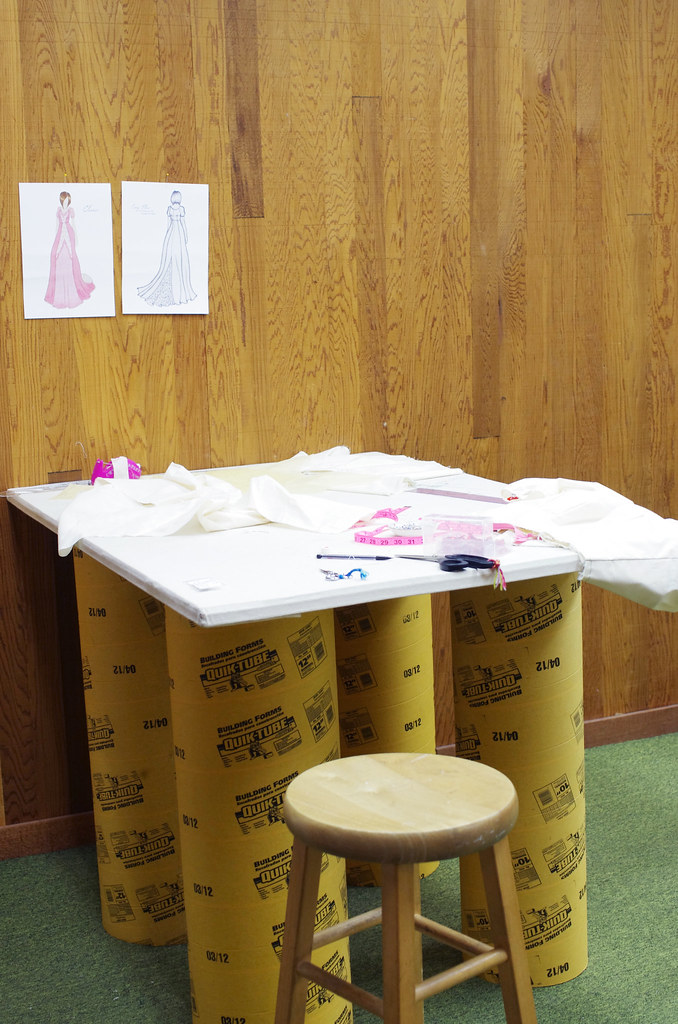
This last Sunday, it was a sunny, warm day, and as I wove my way through the farmer's market crowd on my way to work on ballgown, I saw a flash of pastry in someone's hand and immediately knew that a warm buttery thing would make my morning much nicer. I stopped at a little eastern European pastry stall and got some sort of cream cheese danish with powdered sugar on top, then went to school, where Fat Corgi and I worked on patternmaking, listened to music, and watched the sun's slant grow and wane until finally, it was dark.
The last few days have been slow but productive, focusing on little details of fit and construction. I cut all the pieces in two different weights of muslin to stand in for underlining, lining, georgette, and crepe back satin, resulting in wonderfully crisp and thick bodice pieces, layered like flakes of pastry. There's a wonderful precision to sewing in princess lines in this thickness; a firm and satisfying snap to trimming seam allowances with small, sharp scissors.
It's also a much slower process, to practice everything in muslin: sewing French seams; basting pieces together in a certain order; grading seams and clipping curves and so much hand-sewing of bias binding that my eyes cross at the thought. The last few fit muslins took me about an hour to sew together; this final muslin with seam treatments and linings has taken me over 15 hours.
Working so hard for so many hours is both incredible and incredibly tiring. I catch myself saying "yellow" when I mean "pink", and I reach for even the simplest of words. I dream about sewing floaty pink fabric, and wake in the morning, still tired, with my legs caught up in the duvet.
But there is, apparently, magic in exhaustion: yesterday I woke up with a sudden, clear diagram of how to sew together my bodice with all of its fiddly transparent bits and lining pieces that don't connect smoothly to other lining pieces. Then I went to school and did it, and it worked perfectly. (Thanks, brain. You deserve a really good nap at the end of this.)
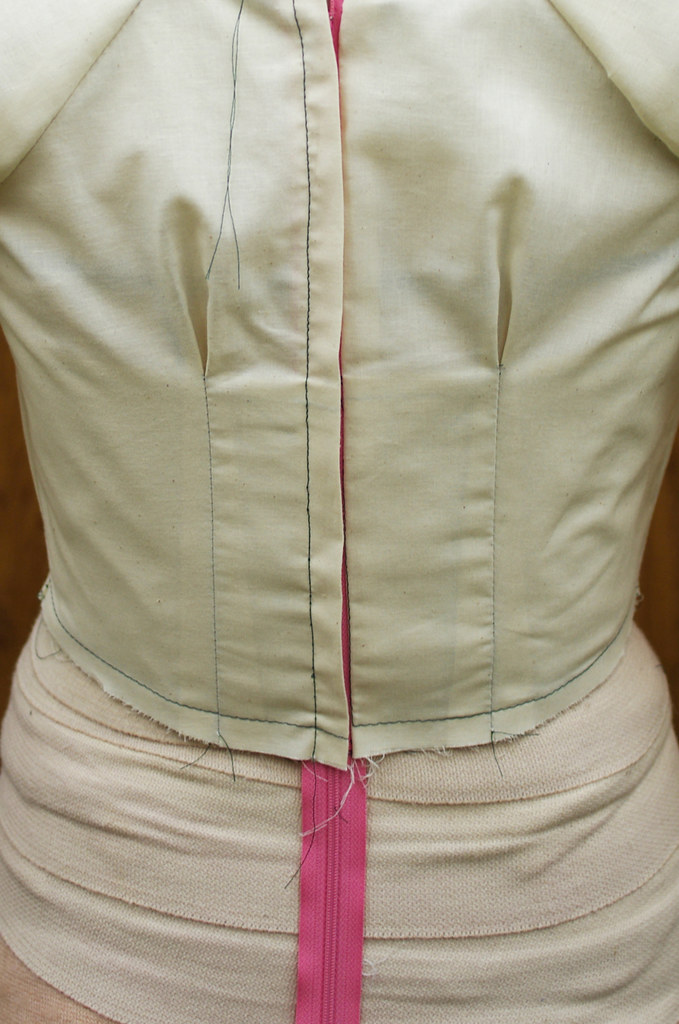
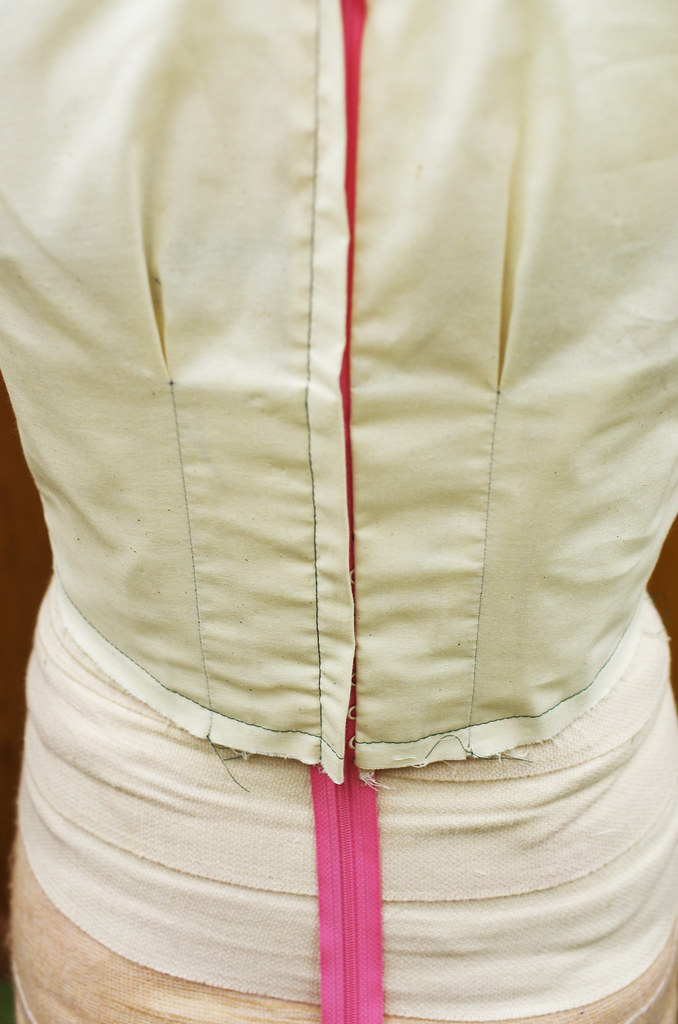
So far, I've struck a hesitant truce with my perfectionist self. Yesterday I sewed a seam that, upon turning, was totally wrong, but by the time I got there, it was 10:45 and I was tired and I have so, so much more to do that it just didn't seem that important. I wrote a note in my book about matching that seam better when I sew it for real, and I cleaned up, and I went home. It seems that failure, at the very least, is an opportunity to learn what's important - and what isn't. (At 10:45 at night when I've worked for 12 hours and am falling over, achey-back, bone-tired, precious few things fall into that category: a very good sign to go home.)
On the other hand, I control the things that I can, when I think they're important, and I think it makes me a better designer. In the left photo is a lapped zipper with the back detail: a pretty inverted pleat that opens, fetchingly, at the base of the shoulder blade. (The director calls prominent shoulder blades angel wings, which I like.) But when I sewed them in, I noticed that the lap was visually different, even though it was technically correct: the pleats are placed at slightly different widths from the center back, which goes straight down the lap.
So I changed it: made the back asymmetrical, with separate pattern pieces for the right and left, so that the lap falls at not quite the true center of the back, but it reads as correct (the photo on the right.) It's a small detail, but it's the thought behind it that I love - and it's that intangible something-ness of well-executed simplicity that I find so inspiring, and that I can only hope to strive for in my design life.
Happy Tuesday, friends!
<3
Cory

No comments:
Post a Comment